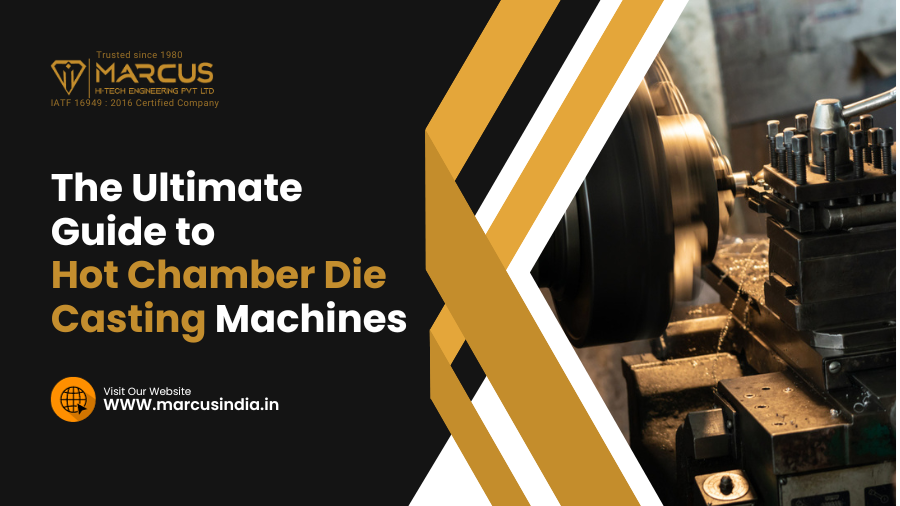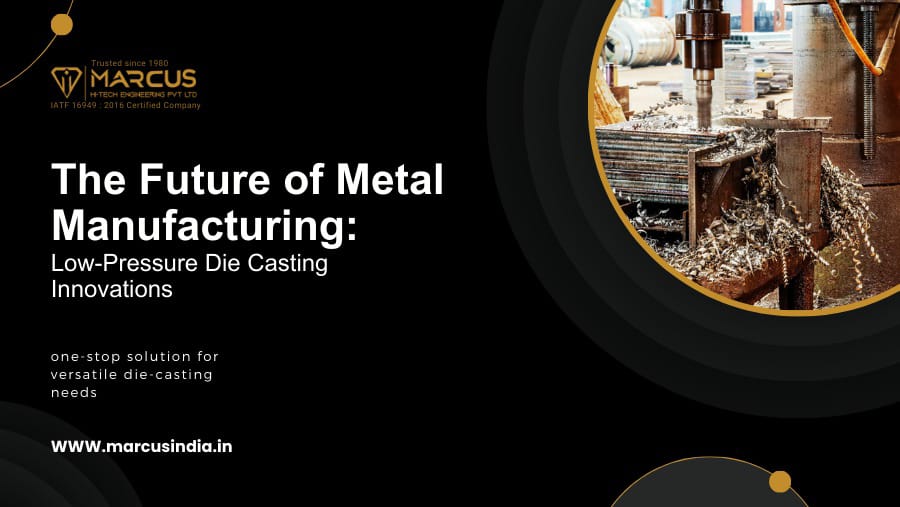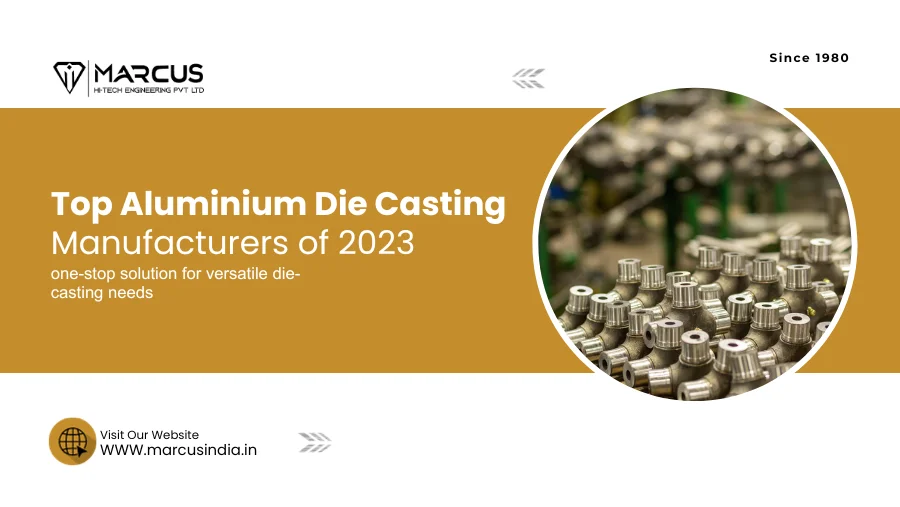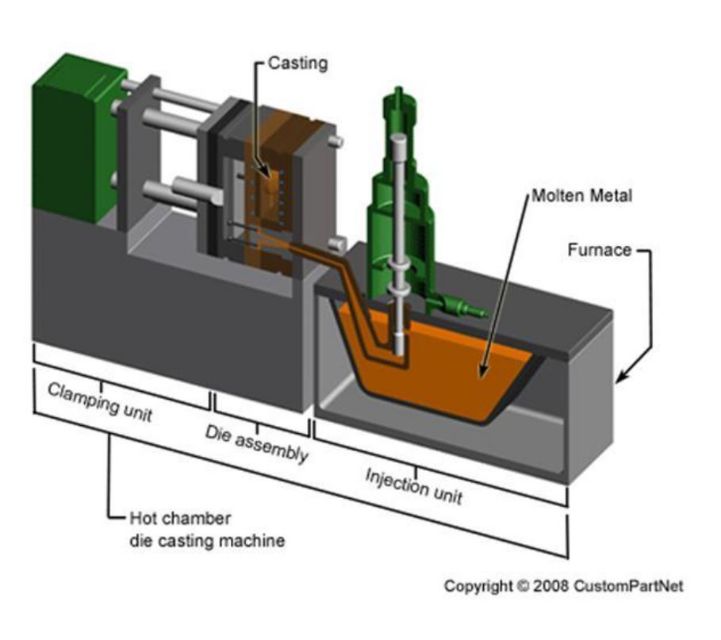Hot chamber die casting machines are indispensable tools in the manufacturing sector, providing a reliable and efficient means of producing intricate metal components in large quantities with precision. However, selecting the appropriate hot chamber die casting machine for manufacturers can be overwhelming.
The market has many choices, each boasting diverse specifications, features, and price points. In this increasingly competitive manufacturing, choosing a hot chamber die casting machine is paramount for companies aiming to maintain a competitive edge. The decision carries significant implications for a company’s productivity, cost-efficiency, and the overall quality of its products.
In this article, we will delve into crucial considerations when choosing the perfect hot chamber die casting machine for your enterprise. Covering aspects such as performance, durability, safety, and cost-effectiveness, we aim to furnish you with a comprehensive guide that empowers you to make a well-informed decision, elevating your manufacturing capabilities to new heights. Let’s get started!
What is a Hot Chamber Die Casting Machine?
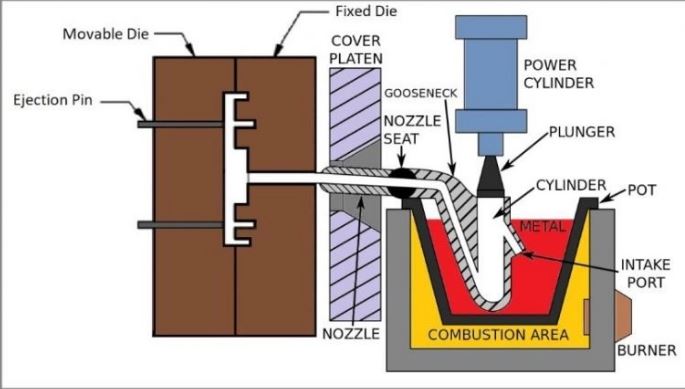
Hot chamber die casting machines are formed by injecting molten metal into molds under substantial pressure, ensuring exceptional surface finish and dimensional accuracy. These machines are highly regarded for their precision in crafting top-quality metal components, serving the automotive, aerospace, and electronics industries. They excel in producing intricate shapes and thin-walled parts unmatched by alternative methods, all while boasting efficiency with short cycle times.
However, they are typically limited to smaller parts due to handling constraints, and the initial tooling investment can be substantial, which may challenge smaller businesses. Hot chamber die casting machines are a potent manufacturing technology known for their precision and efficiency, making them a popular choice across various industries.
Factors to Consider When Selecting a Hot Chamber Die Casting Machine
Several factors must be considered when choosing a hot chamber die casting machine to ensure you get the best machine. Here are some of the most important factors to keep in mind:
Size
Consider the machine’s physical dimensions and how well it aligns with the size of the parts you intend to cast. If you’re producing more significant components, a device with a more extensive injection system and a spacious mold cavity will be necessary to accommodate them effectively.
Capacity
The machine’s capacity pertains to its ability to hold molten metal and deliver it into the molds. Choosing a device with a degree that matches your production needs is crucial. Insufficient capacity may result in frequent interruptions to refill the molten metal, impacting efficiency.
Speed
The speed of the machine determines how quickly it can produce parts. This factor is essential for meeting production targets and deadlines. Ensure the machine’s speed aligns with your required output without compromising quality.
Automation
Automation features can significantly enhance efficiency and reduce labor costs. Automated machines require less manual intervention, which can lead to higher productivity. For improved efficiency, look for features like automatic mold clamping, metal injection, and part ejection.
Maintenance
Regular maintenance is crucial for the longevity of your machine. Choose a machine that is easy to maintain, with accessible components and readily available spare parts. Machines that are designed for easier maintenance can reduce downtime and associated costs.
Cost
While cost is a significant factor, it should be considered alongside other criteria. Aim for a machine that effectively fits your budget and meets your production requirements. It’s essential to strike a balance between cost and value, ensuring that the machine provides long-term benefits and reliability.
By evaluating these factors carefully, you can make an informed decision when selecting a hot chamber die casting machine that suits your specific casting needs and business goals.
The Key Components of Hot Chamber Die Casting

To understand hot chamber die casting, we must first become familiar with its essential parts.
Hot Chamber
The hot chamber is at the center of the die casting process. They put the part in a pool of melted metal, often mixed to meet specific needs. It serves as the reservoir from which molten metal is drawn and injected into the mold.
Plunger
The plunger is a crucial part that pushes the hot metal into the mold. It works with the die casting machine to make injections precise and repeatable.
Mold
The mold, also known as the die, defines the shape and dimensions of the final product. Using durable materials like steel makes it withstand high temperatures and pressures.
Cooling System
Efficient cooling is vital in hot chamber die casting to o. It facilitates the solidification of the injected material. The mold has built-in cooling channels to speed up cooling and keep the size right.
Die Casting Machine
Last but not the least. The die casting machine serves as the workhorse of the process. It consists of two main parts: the fixed half, known as the “cover die,” and the movable half, referred to as the “ejector die.” These dies form the mold cavity that defines the shape of the final product.
Hot Chamber Die Casting Process
Step 1: Mold Preparation
The hot chamber die casting process starts with carefully preparing the mold or die. This step is crucial as it defines the shape and dimensions of the final product. Molds are often made from solid materials like steel to handle high temperatures and pressures.
Step 2: Mold Closure
Once the mold is prepared, the next step is to close it, forming a sealed cavity that mirrors the desired component shape. The mold has two halves: the fixed half (cover die) and the movable half (ejector die). When closed, these halves create a precise void filled with molten metal.
Step 3: Injection
With the mold securely closed, the injection phase begins. At the heart of this phase is the plunger, a critical component of the die casting machine. The plunger pushes down hard on the liquid metal in the hot chamber, making it go into the mold.
The injection process is characterized by its speed and precision. The plunger moves quickly to fill every small mold detail with hot metal. This rapid injection is crucial for achieving high production rates and dimensional accuracy.
Step 4: Solidification
As the molten metal enters the mold cavity, it cools and solidifies. Strategically designed cooling channels within the mold facilitate the cooling process. Proper cooling is essential for keeping the component’s size and properties intact. Solidification times can vary depending on the size and complexity of the element. Ensuring the proper solidification of the material is essential for producing high-quality parts.
Step 5: Ejection
The injection cycle is complete once the component is removed from the mold. The ejection phase needs careful coordination to avoid damaging the newly made part. Using lubricants and ejector pins aids in the smooth and controlled removal of the part from the mold.
A Brief Comparison Between Hot Chamber and Cold Chamber Die Casting
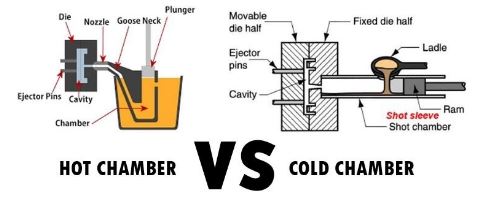
Hot chamber die casting and cold chamber die casting represent the two primary die casting methods, and it’s beneficial to briefly discuss hot chamber and cold chamber die casting differences for a more comprehensive understanding:
Furnace Setup
The furnace and die are integrated into a single hot chamber die casting unit. In contrast, cold chamber die casting employs a separate, often remotely located furnace setup within the factory.
Cycle Times
Cold chamber die casting typically involves longer cycle times, resulting in lower productivity due to extended melting and cooling periods.
Materials
Hot chamber die casting primarily employs metals like zinc, magnesium, and tin, whereas cold chamber die casting commonly utilizes higher melting temperature metals such as aluminum alloys.
Safety Measures
Hot chamber die casting is generally considered safer due to reduced molten metal movement and lower operating temperatures. Cold chamber die casting requires more substantial investments in worker and equipment safety.
Investment Costs
Cold chamber die casting often demands higher initial investments. This is due to the expenses associated with separate furnaces and die casting setups, elevated energy costs, increased maintenance expenses from temperature-related wear and tear, and a shorter tool life, which can incur high charges in die casting operations.
Innovations in Hot Chamber Die-Casting Machines
Hot chamber die casting has embraced innovation in dynamic manufacturing to elevate its capabilities. Automation and robotics have streamlined the process, enhancing precision and consistency. Advanced control systems enable real-time monitoring and adjustments, ensuring the highest quality components. Energy-efficient heating and cooling technologies contribute to sustainability and cost-effectiveness.
The development of new alloys has led to improved material performance. Integration with 3D printing accelerates prototyping and tooling. Digital twin technology creates virtual replicas for predictive maintenance and optimization. These innovations propel hot chamber die casting into the future, efficiently and precisely adapting to the evolving manufacturing landscape.
Selecting the Ideal Hot Chamber Die Casting Machine
Selecting the appropriate hot chamber die casting machine for your business can appear daunting, yet it’s a critical decision with significant implications for your productivity and profitability. Here are some guidelines to aid you in making an informed choice:
Evaluate Your Requirements
Begin by comprehending your production needs, the materials you’ll use, and the dimensions of the parts you intend to manufacture. This knowledge will help you identify the specific features your hot chamber die casting machine should possess.
Size and Capacity Considerations
Seek a machine that aligns with your production volume requirements. Examine the machine’s physical dimensions and ability to produce various part sizes and shapes.
Quality and Durability
Prioritize machines constructed from high-quality materials featuring robust designs engineered for longevity. This ensures that your machine can endure the rigors of your production process and consistently deliver excellent results over the long term.
User-Friendliness and Maintenance
Opt for a user-friendly machine with intuitive controls and straightforward maintenance procedures. Accessibility to machine components for maintenance should be hassle-free.
Budget Versus Features
While staying within your budget is essential, avoid compromising quality for a lower price. Find a machine that fits your financial constraints and offers the essential features and capabilities your business demands.
Safety and Compliance with Hot Chamber Die Casting Machines
Opt for a Machine Compliant with Industry Standards
Prioritize machines that either meet or surpass industry standards regarding safety and performance. This selection ensures your machine is meticulously designed and constructed for dependable and secure operation.
Provide Thorough Operator Training
Comprehensive training in utilizing hot chamber die casting machines is fundamental for safety and adherence to regulations. Operators should undergo training covering all facets of machine operation, encompassing safety measures, maintenance protocols, and effective troubleshooting.
Implement Regular Machine Maintenance
Consistent maintenance is critical to upholding the secure and efficient functioning of your hot chamber die casting machine. This encompasses periodic inspections, the cleaning regimen, and the proper lubrication of all machine parts and components.
Adhere to Safety Protocols Rigorously
Always adhere to safety directives and industry best practices when operating hot chamber die casting machines. This entails donning appropriate personal protective gear, complying with lockout/tagout procedures, and exercising caution while handling hot materials.
Materials Used in Hot Chamber Die Casting Machines
The choice of materials for a hot chamber die casting machine largely depends on the specific requirements of the part being produced. Here are some common materials used in hot chamber die casting:
Zinc
Zinc is one of the most commonly used materials in hot chamber die casting. It offers excellent castability, dimensional stability, and corrosion resistance. Zinc die castings are often used for small to medium-sized parts in the automotive, electronics, and consumer goods industries.
Magnesium
Magnesium is known for its lightweight properties, making it an ideal choice for applications where weight reduction is critical, such as in the aerospace and automotive industries. Magnesium die castings offer good strength-to-weight ratios and are resistant to heat.
Aluminium Alloys
Aluminum and its alloys are used in hot chamber die casting for parts that require high strength and good corrosion resistance. Aluminum die castings are commonly used in automotive, aerospace, and electronics applications. Different aluminum alloys can be chosen to meet specific requirements.
Copper
Copper die castings are used when excellent electrical conductivity is required. They are commonly used in electrical and electronic components where efficient heat dissipation and conductivity are crucial.
Lead and Tin Alloys
Lead and tin alloys are used in applications where excellent machinability and corrosion resistance are needed. However, lead-based alloys have significantly decreased due to environmental concerns in recent years.
The choice of material depends on factors such as the part’s function, required mechanical properties, environmental conditions, and cost considerations. Hot chamber die casting machines are versatile and can work with various materials to meet the demands of different industries and applications.
How to Maintain and Service Your Hot Chamber Die Casting Machines?
Proper maintenance and service are crucial to ensure the longevity and reliability of your hot chamber die casting machine. Regular maintenance helps prevent breakdowns and costly repairs while ensuring your machine operates at peak performance.
- Conduct routine inspections to identify wear and tear, such as loose belts, leaks, or damaged components. Promptly address any issues to mitigate further damage.
- Regularly clean your machine to prevent the accumulation of dirt and debris, which can harm the machine’s functionality and performance.
- Adhere to the manufacturer’s recommended maintenance schedule for your machine. This may entail oil changes, filter replacements, and other routine maintenance procedures.
- Provide proper training to your operators on both machine maintenance and usage. This training can help reduce the risk of operator errors and minimize the potential for damage to your machine.
Also check: Aluminum Gravity Die Casting: A Complete Guide
By adhering to the guidelines given in this article, you can effectively select the ideal hot chamber die casting machine for your business. Always keep your specific needs and requirements in mind and opt for a machine that combines reliability, efficiency, and cost-effectiveness. Choosing the appropriate hot chamber die casting machine requires thoughtful evaluation of production volume, part complexity, and budget. Investing in the right hot chamber die casting machine can produce high-quality, consistent parts, enhance efficiency, and drive business growth.
In acquiring the suitable die casting machine, Marcus High-Tech Enginnering is a trusted partner, offering machinery and a partnership built on reliability, efficiency, and long-term success. Their support and guidance are invaluable assets in the quest for high-quality, efficient, cost-effective die casting solutions. When considering the selection of the perfect hot chamber die casting machine for your business, trust Marcus India’s expertise and commitment to quality, with which they have played a pivotal role in guiding companies toward optimal choices. By collaborating with Marcus India, you can tap into their wealth of knowledge, ensuring that your investment aligns seamlessly with your specific needs and goals.
FAQs
Hot chamber die casting is a metal casting process used to create precise and complex parts by injecting molten metal into a reusable mold cavity under high pressure. Unlike cold chamber die casting, in hot chamber die casting, the metal is melted and stored in a furnace attached to the casting machine.
Hot chamber die casting is commonly used for materials like zinc, magnesium, and some other low-melting-point alloys. These materials are well-suited for the hot chamber process due to their lower melting temperatures.
- Faster production: Hot chamber die casting is generally faster than cold chamber die casting because the metal is already in a molten state, reducing cycle times.
- High precision: It can produce highly detailed and intricate parts with tight tolerances.
- Cost-effective for certain alloys: Hot chamber die casting is cost-effective for materials with lower melting points, such as zinc.
- Limited material compatibility: It’s not suitable for materials with high melting points, as they could damage the machine’s components.
- Limited part size: Hot chamber die casting is typically used for smaller to medium-sized parts.
- Reduced tool life: The constant exposure to high temperatures can reduce the lifespan of the die casting tooling.


